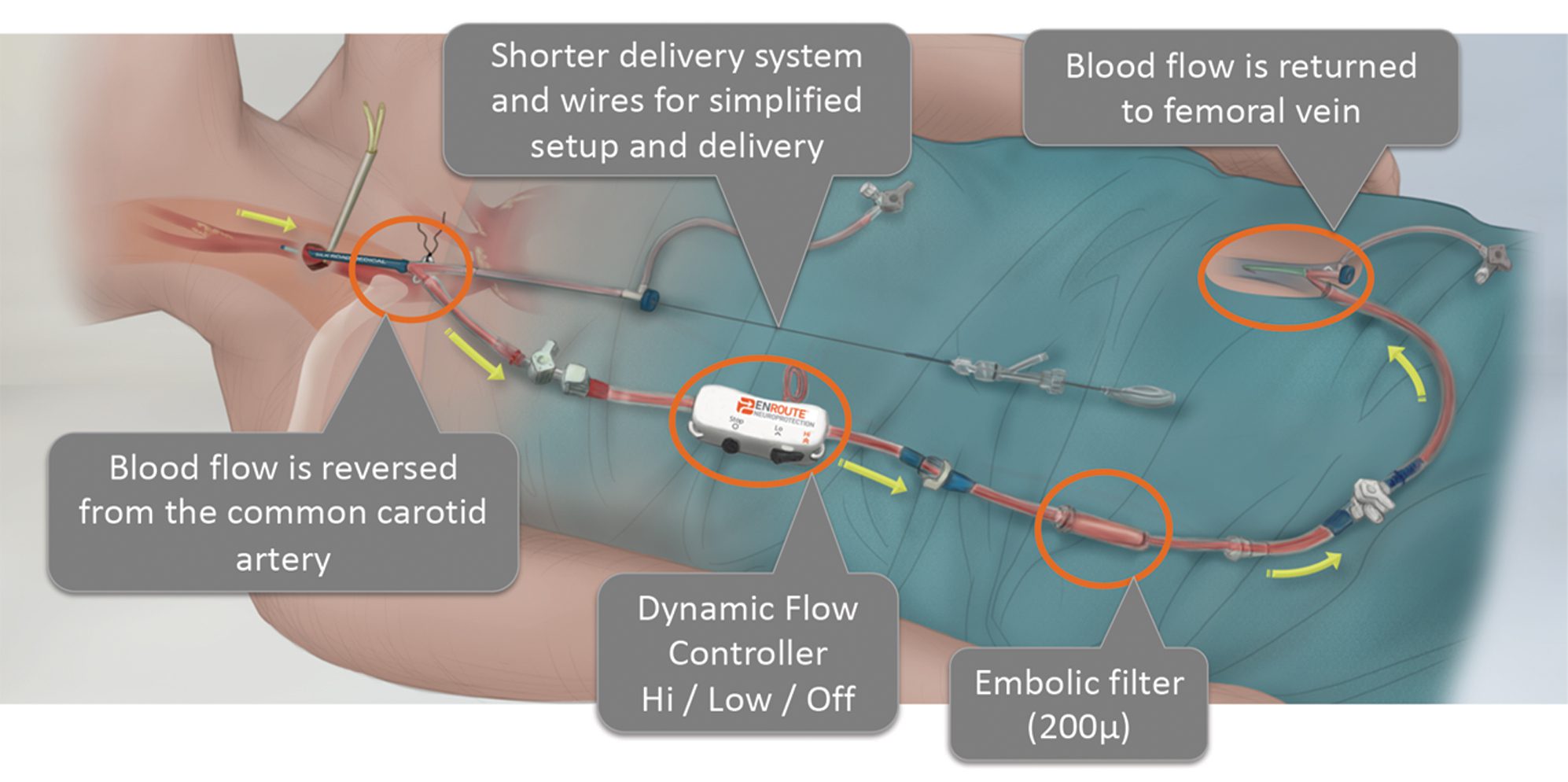How TCAR Helps To Prevent Stroke During Stenting
By Russell Becker, DO, Vascular Surgeon
Plaque in the arteries (atherosclerosis) can cause many issues, but when the carotid arteries are blocked, the stakes are higher due to the likelihood of plaque breaking off or total occlusion of the artery, which can cause an ischemic stroke. When vascular surgeons are attempting to clean out, repair the carotid artery, and place a stent, the risk of stroke is also higher. It is a very intricate procedure that should only be performed by highly qualified surgeons.


A carotid endarterectomy, where the plaque in the major blood vessel to the brain is cleaned out and repaired, is a surgery meant to prevent stroke. This should be performed via a TCAR procedure, which is a minimally invasive Transcarotid Artery Revascularization.
The TCAR procedure significantly reduces the risk of stroke during the surgery as compared to conventional stenting. It is a minimally invasive procedure that utilizes a unique protection device, which is called the neuro-protective system or NPS.
During the procure, the neuro-protective system is placed via a tiny access point that is made at the neckline, and a tube is inserted into the carotid artery. This tube is connected to the neuro-protection system and reverses blood flow away from the brain, while the stent is being placed. This is critical so that any loosened plaque will flow in the opposite direction and not cause a surgically-induced stroke.
This high-rate temporary blood flow reversal provided by NPS catches any material or plaque that is sloughed off during the procedure, and it’s filtered outside of the body. The filtered blood is cleaned and returned to the patients’ blood flow through a catheter that’s placed in the groin. Once the stent is safely placed, the NPS is turned off, and the blood flow can circulate normally throughout the body.
The patient’s blood flows through the NPS, and any free-flowing material is caught in a filter outside the body. The filtered blood is then returned through a second tube in the patient’s upper leg. After the stent is placed successfully, flow reversal is turned off, and blood flow resumes in its normal direction.
When a conventional stent is placed via the groin for carotid surgery, the risk of stroke is much higher. The TCAR procedure is innovative, safe, and effective for patients in these high-risk situations with carotid artery stenting.
Dr. Becker of the Vascular Center of Naples was the first in the state of Florida to perform the TCAR procedure! He is always on the cutting-edge of innovative technology that is most optimal for his patient’s intervention in disease management and recovery.
Russell Becker, DO, Vascular Surgeon
Dr. Becker received his fellowship training in vascular and endovascular surgery at Wayne State University in Detroit. He is board-certified by the American Osteopathic Board of Surgery, he’s a fellow of the American College of Osteopathic Surgeons, and he retains active memberships with the Society for Vascular Surgery and the Florida Vascular Society.
Dr. Becker has experience and interest in all areas of vascular and endovascular surgery, including treatment of conditions like carotid artery disease, hemodialysis access creation and maintenance, and diseases of the veins.
Beyond performing surgery, Dr. Becker is a well published author of vascular surgery literature. He has previously served as an investigator in numerous new and developing clinical device trials and has been a part of the clinical faculty in vascular surgery at Michigan State University College of Human Medicine in East Lansing, Michigan.
Vascular Center of Naples
5490 Bryson Dr. Suite 201
Naples, FL 34109
239-431-5884
www.vascularcenternaples.com
 Southwest Florida's Health and Wellness Magazine Health and Wellness Articles
Southwest Florida's Health and Wellness Magazine Health and Wellness Articles
